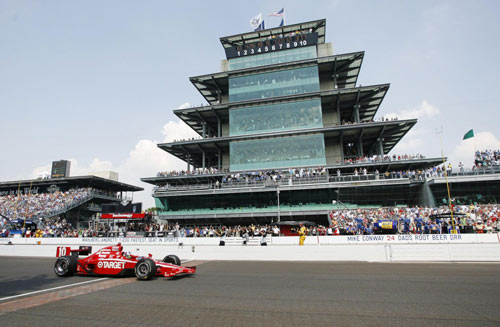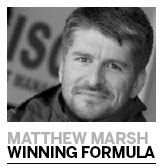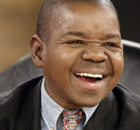Top News
Indy 500 stutters on
By Matthew Marsh (China Daily)
Updated: 2010-06-02 10:52
 |
Large Medium Small |
 |
|
Target Chip Ganassi Racing driver Dario Franchitti crosses the finish line to win the 94th running of the Indianapolis 500 auto race in Indianapolis, Indiana May 30, 2010. [Agencies] |
The organizers of the Indianapolis 500 call it 'The Greatest Spectacle in Racing' and it's certainly an impressive event. It has taken place on Memorial Day weekend since 1911 and on Sunday your correspondent was one of about 300,000 who watched movie star Jack Nicholson wave the green flag.
The circuit - which measures 2.5 miles (four kilometers) - was originally laid with 3.2 million bricks, hence its nickname, 'the Brickyard'. The infield is so vast it could contain the Vatican City plus the Churchill Downs horse racing course (home of the Kentucky Derby), the Wimbledon tennis complex, the Roman Colosseum, the Yankee Stadium and the Los Angeles' Rose Bowl stadium. No wonder they call it 'The World's Greatest Race Track'.
Except that the world is not watching. It's always been a domestic event but at its peak the 500 attracted international interest. It was what all American drivers aspired to and was a close second to F1 on the world stage. The racing was highly professional and exciting. Al Unser Jn's margin of victory over Scott Goodyear in 1992 was 0.043 of second.
Sadly the golden goose was killed by political infighting in the mid-1990s. The argument was about which was more important: the Indianapolis 500 or the rest of the 'CART' or 'IndyCar' championship. The answer - obvious to most - was that neither could profit without the other.
|
||||
And so it was that Sunday's Indy 500, at a classic and historic venue in front of more than a quarter of a million enthusiastic fans, was a second rate motor race. Meanwhile, the Turkish Grand Prix was a fantastic battle between the world's greatest drivers and teams but in a country with very little interest in the sport.
Last week's announcement that F1 would return to the US in 2012 at a new venue in Austin, Texas, was surprising, to say the least. It was greeted here mostly with raised eyebrows. If an established circuit like Indianapolis - which successfully hosted the US Grand Prix between 2000 and 2007 - can't make the numbers work, it's a mystery how this might be achieved by a track which does not yet exist. More importantly, it's difficult to see how the best interests of F1's stakeholders' - the teams, sponsors and fans - are best served by anything other than an immediate return to Indianapolis and a focus on properly incorporating America into the F1 calendar.
Matthew Marsh is one of Asia's best known motor racing personalities. After a successful career on the track, he now works on the commercial side of the sport. He can be reached at mmarsh@ecuriedrapeaujaune.com.












